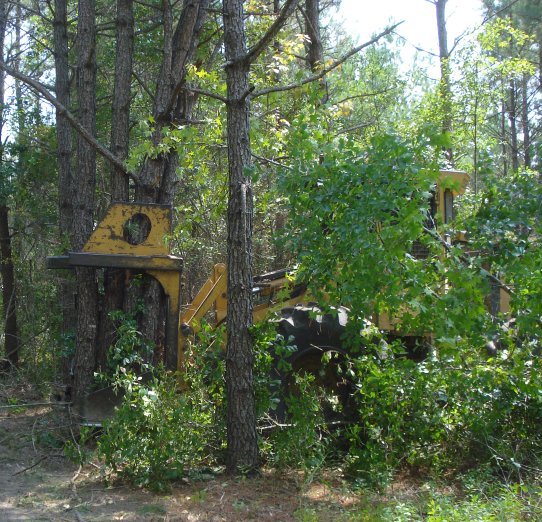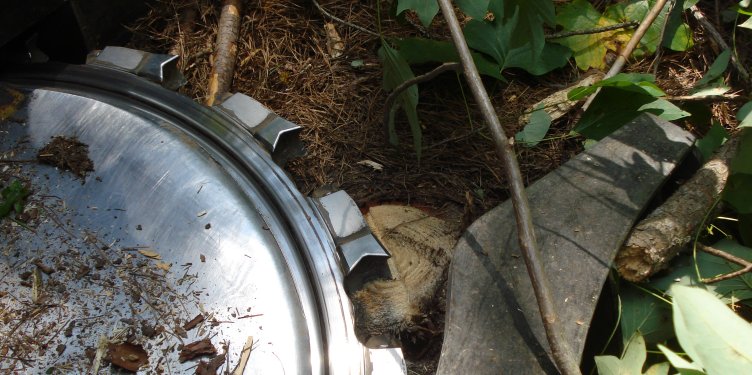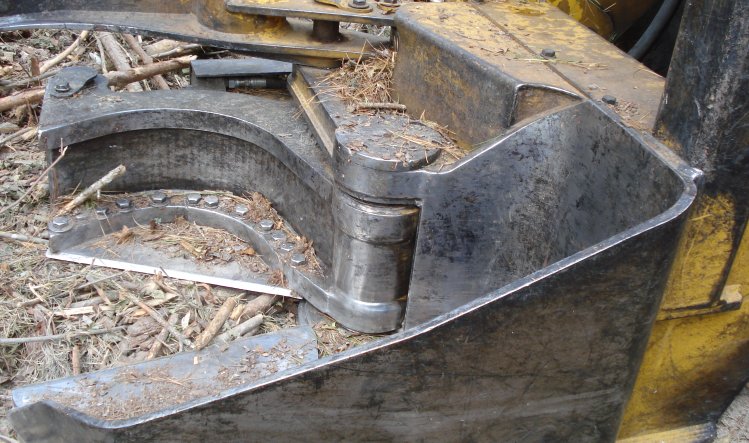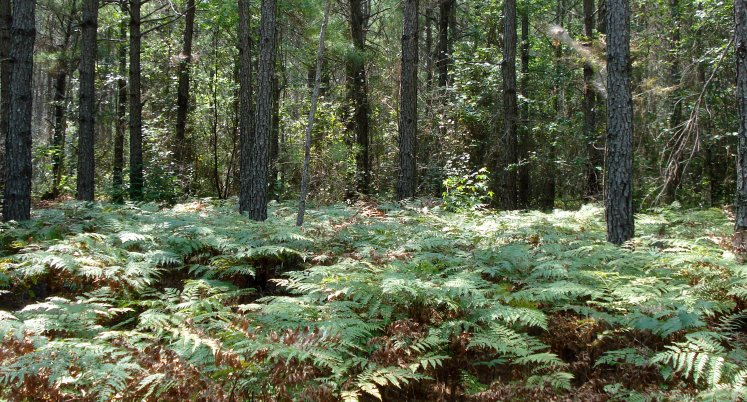
Above is Alex in one of the big forestry machines
Larry Walker has been working forestry in Virginia for more than thirty years. I was grateful that he took the time to show me some ongoing forestry operations and explain some of the basics.

Forestry in Virginia is very different today than it was even ten years ago. Much of it has to do with mechanization. Some of the big machines cost around a quarter a million dollars but they do the job of dozens of workers and they make forestry a much safer occupation. The machine just grabs the trees and cuts them in seconds. Chain saws are gone. Good thing too.
Cutting with chain saws is just plain hazardous. The saw itself is dangerous and so is the falling log as well as all the branches up top. They used to call heavy dead branches “widow-makers.” Modern machines eliminate all of this. The operator sits in a reinforced cab. If a tree falls on top of the cab, the tree breaks. Larry told me that the machine can tip over and still the cab will not be broken. The cutting machine can grab and hold six or ten trees at a time and a good operator can clear hundreds of trees in a couple of minutes.

But the thing that really eliminated the chain saw was the machine that cuts off the limbs. You can see it above. It takes seconds to pull through a bunch of trees. Then a automatic saw cuts off the tops. Later the buncher comes back, takes away the branches and spreads them more or less evenly around the woods.

We watched a thinning operation. The trees were seventeen years old, which is a little old for the first thinning, but well within the “usual” time. Smaller holders are unenthusiastic about thinning right now, since prices are low. Larger holders, like the TIMO (timber investment managment organization, sort of a timber-land mutual fund) whose land we were visiting, thin on schedule no regardless of the market. Above is the cutting saw on the buncher. Below is a clipper. It works just as you would guess. The saw is the more effective and modern technology.

First the operator makes a row through the trees, taking out all the trees in the row. Next he selects and cuts out the stunted, deformed or runt trees among the remaining ones. When they are removed, the other grow significantly faster. You can see how it works when you look at the tree rings. The trees grow fast until the crowns close. They grow fast again after thinning. Loblolly pines respond well to “release” i.e. they grow a lot faster when given more light, water and nutrients. Not all tree species are so adaptive.

If they are prevented from growing up to potential when young, some remain stunted even after competition is removed. This adaptable characteristic of the loblolly is one reason it is the most common plantation tree in the South and is planted in faraway places like Brazil, South Africa and Australia. Loblolly pines continue to grow rapidly until they are around thirty-five or forty. After that, the rings are tight. It is easy to estimate the age of a loblolly when they are young and a ten-year-old tree is very different from a fifteen-year-old, but although the trees might live almost 200 years, it is not easy at a glance to tell a forty-year-old tree from a sixty or eighty-year-old-tree.
It takes about ten fifteen or minutes to cut off the branches and load the trucks you see below.

This particular forest has an interesting history. There was a big forest fire two years ago and strong winds knocked down an electrical wire and then pushed the fire through the woods. Larry’s firm was hired to do a salvage cut on trees that looked dead. But there was a lot of rain and they couldn’t get their machines in. The trees greened out during the waiting time. It turned out that the fire improved the stand, burning out most of the brush and hardwood completion.

After the fire, the ferns filled in. I understand that this is fairly common.Forest Thinning with Really Big Machines
